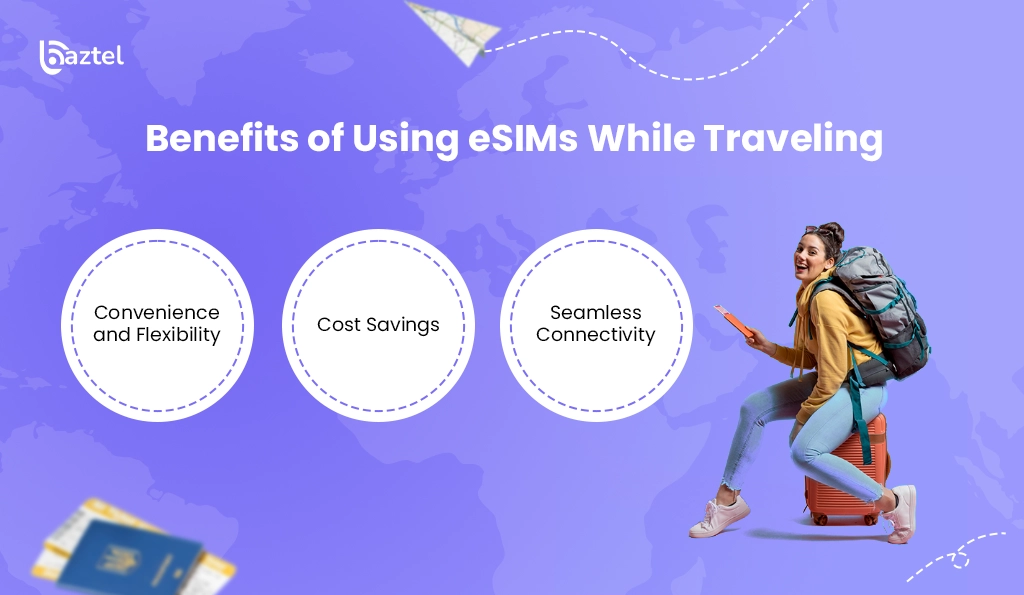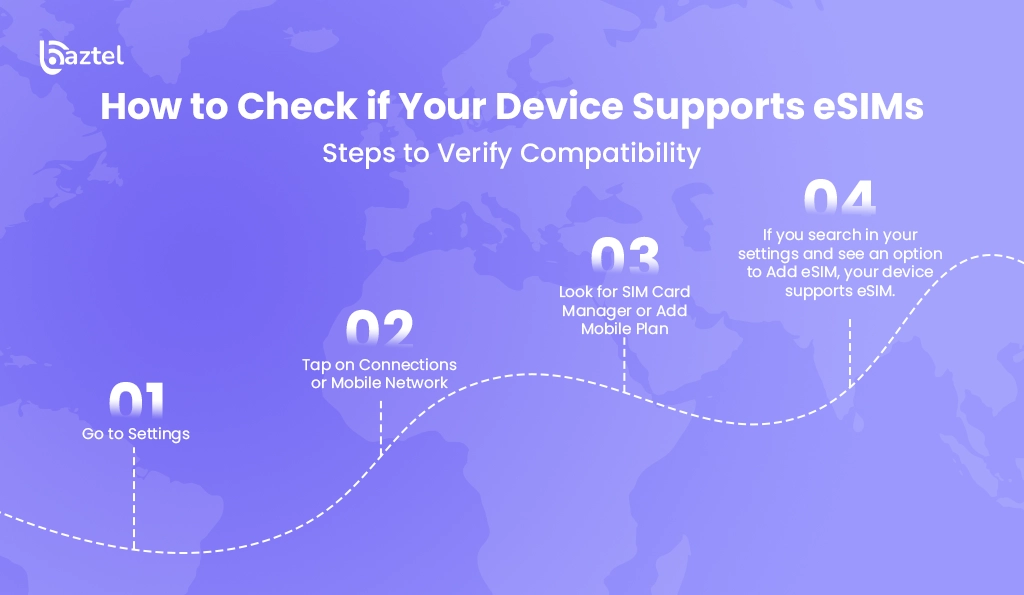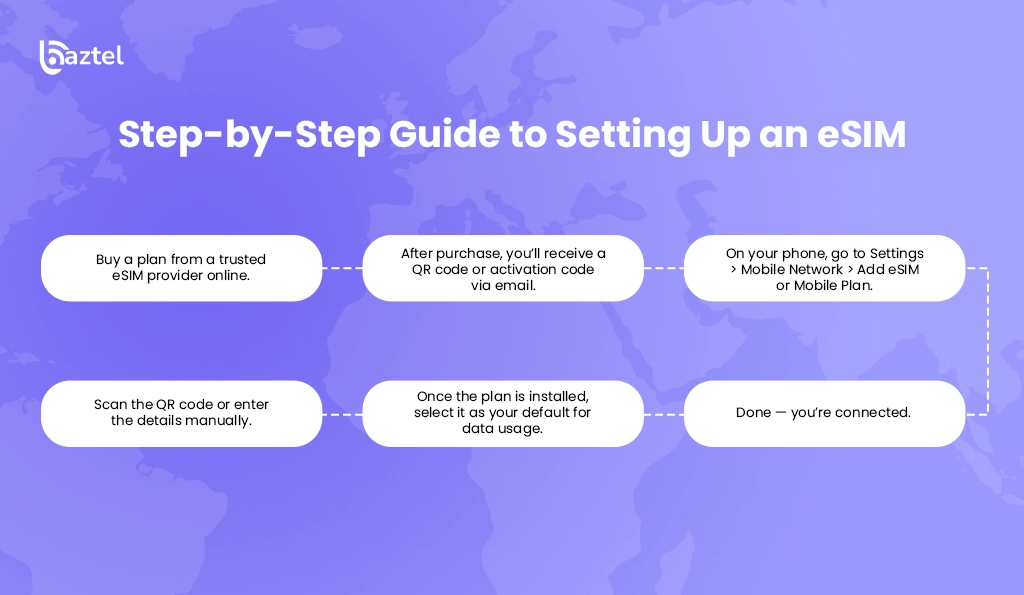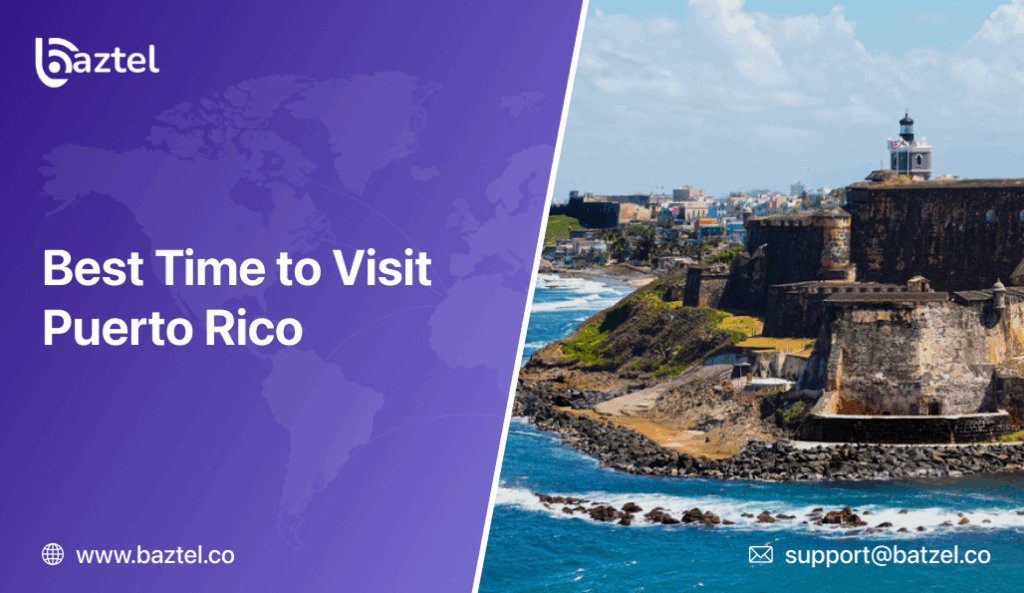Traveling today is all about staying connected — whether it’s for maps, bookings, or simply updating your family back home. That’s where eSIM cards for travelers become indispensable. An eSIM (which stands for embedded sim) is a small chip that is actually embedded into many modern smartphones. Unlike the traditional sim card that you physically put into your phone, an eSIM is activated digitally by using a QR code or application. Once the eSIM is established, your phone will work on local mobile networks just like it would on a SIM card but without the hassle of swapping SIMs, looking for a local store, or worrying about compatibility. eSIMs obviously make international travel much easier, especially for individuals who travel country-to-country, regularly. With just a few taps, you’re online — no plastic, no stress. In this blog, we’ll guide you through everything from choosing the best eSIM cards for international travelers to activating one and avoiding common travel issues.
Benefits of Using eSIMs While Traveling

When you are traveling, you will want to reduce any connectivity issues whenever possible; and, that is probably the reason eSIM cards for travelers have become a disruptor and a game-changer. They remove the friction from mobile access while saving time, money, and stress. No more juggling several SIM cards or looking for local options at the airport when you arrive at your destination. Whether you are a frequent flyer or preparing for your first international trip, eSIM cards provide an unparalleled level of convenience and accessibility to your device.
Convenience and Flexibility
eSIMs allow you to switch between mobile networks without the need or hassle of physically removing or replacing a SIM insert. You can now save multiple profiles on one device – which means there is no need to worry about tiny SIM trays, or another SIM to carry around. Heading to a new country? All you have to do is scan a code, choose your plan, and you’re online. This convenience for digital nomads or people coming and going between countries saves them a lot of time and lowers the stress often associated with travel.
Cost Savings
Travelers are regularly overspending on roaming fees or international data packs, often without realizing it. The eSIM allows you to find prepaid plans with transparent pricing so you don’t have to worry about hidden bills. You can shop for the cheapest data plans across specific destinations, usually with local rates. That’s a smart way to stay connected without burning through your travel budget.
Seamless Connectivity
You land, power up your phone, and the internet just works – eSIM’s do all of this for you. You no longer have to wait like cattle at airport kiosks or rely on lackluster Wi-Fi. Most eSIM’s, like eSIM from Airalo, give instant activation to users which is crucial if you’re trying to book a ride, check directions, or message relatives right when you arrive somewhere. This always on access is immensely helpful with layovers, emergencies, or switching from one country to another in a single trip.
How to Check if Your Device Supports eSIMs
Before you purchase eSIM cards for travelers, the first step is to ensure that your phone or tablet is eSIM compatible. Not all phones support eSIM chips; especially if you are using a carrier-locked phone or a device manufactured in the last few years. If you check now you can avoid potential confusion later, particularly in a foreign country when you’re trying to get immediate access to data. If you determine that your device supports eSIM chips, you are ready to find eSIM cards for travelers that are affordable and flexible.
Popular eSIM-Compatible Devices
Most flagship devices from the last few years have supported eSIM chips. For example, Apple’s iPhone devices from the XR and newer models, except for some carrier-specific models; Google Pixel (3 and above); and the recent Motorola and Samsung Galaxy S series and Z series. Even some iPads and laptops now include this feature. Still, it’s best to double-check your exact model to avoid last-minute surprises.
Steps to Verify Compatibility

Here’s how to quickly check if your device supports eSIM:
- Go to Settings
- Tap on Connections or Mobile Network
- Look for SIM Card Manager or Add Mobile Plan
- If you search in your settings and see an option to Add eSIM, your device supports eSIM.
Another option is to search for your device’s name and “eSIM support” online – you can usually find your answer directly from your manufacturer.
How to Activate an eSIM for Travel
Once you’ve confirmed compatibility, setting up your eSIM card for international travel is usually a breeze. Activation is entirely digital — no more fumbling with trays or tiny pins. Whether you’re buying directly from an eSIM provider or scanning a QR code from your email, the process takes just a few minutes. And the best part? You can do it before your trip, during your layover, or even after landing. That’s the power of eSIM cards for travelers — total control of your mobile data, no matter where you are.
Step-by-Step Guide to Setting Up an eSIM

- Buy a plan from a trusted eSIM provider online.
- After purchase, you’ll receive a QR code or activation code via email.
- On your phone, go to Settings > Mobile Network > Add eSIM or Mobile Plan.
- Scan the QR code or enter the details manually.
- Once the plan is installed, select it as your default for data usage.
- Done — you’re connected.
Some providers even offer apps that handle the entire activation without scanning anything.
Things to Consider Before Activation
A few things to keep in mind:
- Wi-Fi is required during activation.
- Make sure your phone is unlocked (not tied to a specific carrier).
- If you’re using dual SIM, choose which one handles data, calls, and SMS.
- Some eSIMs are single-use — once deleted, they can’t be reinstalled.
- Check the validity period. Some start counting from activation, others from installation.
A quick look at these points will help you avoid unnecessary hiccups while setting up your plan.
Top eSIM Providers for Travelers
If you’re looking for a one-size-fits-all eSIM solution that works in over 140 countries, Baztel is one provider that stands out. It’s designed for real-world travel needs — whether you’re planning a vacation, going on a work trip, or just want a backup internet option that won’t fail you mid-journey. When it comes to eSIM cards for international travelers, Baztel hits the sweet spot between affordability, coverage, and ease of use. You don’t need to be tech-savvy — it’s quick to set up and even easier to manage while you’re on the go.
Regional and Global eSIM Providers
Baztel offers a powerful mix of both — regional packs tailored to specific countries, and global plans that cover multiple regions in one go. You can choose what fits your trip without paying for extras you won’t use. Whether you’re traveling across Europe or heading to just one country, Baztel’s flexibility gives you options. All plans are prepaid, so there’s no fear of surprise charges, and support is fast if anything goes wrong.
| Provider | Best For | Coverage (No. of Countries) | Highlights |
| Baztel | All-round travel & budget trips | 140+ | Affordable, wide coverage, fast support |
| Airalo | Europe & USA short trips | 190+ | Great local/regional plans |
| Flexiroam | Frequent flyers & global coverage | 140+ | Strong global plan, good in remote areas |
| Ubigi | Multi-country trips | 170+ | Use one eSIM across destinations |
| SIM Local | Digital nomads & remote workers | 150+ | Fast speeds, reliable for work |
| Holafly | Unlimited data lovers | 200+ | Unlimited plans, wide reach |
| Roamless | Pay-as-you-go flexibility | 100+ | No contracts, simple top-ups |
| Saily | Cheapest plans for popular countries | 100+ | Budget-friendly for short stays |
Tips for Choosing the Right eSIM Plan

Picking the perfect eSIM card for travelers isn’t just about price — it’s about matching the plan to your trip. A good plan can save you from dropped calls, slow internet, or unexpected charges. A bad one? It can leave you stuck at the airport with no way to book a cab. Whether you’re headed to one country or five, these tips will help you pick the right eSIM card for international travelers without second-guessing later.
Assessing Data Needs
Start by asking — how much data do you actually need? If you’re mostly using maps, messaging apps, and occasional browsing, 1–3 GB may be enough for a week. But if you’re watching videos, attending Zoom calls, or uploading content, you’ll need a bigger plan. Always check your average monthly data usage before deciding — and consider a little buffer, just in case.
Evaluating Coverage and Speed
Not all networks are the same. Some offer blazing-fast speeds in cities but struggle in rural areas. Look for an eSIM provider (like Baztel) that clearly mentions supported countries and local carrier partnerships. It also helps to check whether they include 4G or 5G — especially if you are dependent on mobile data for working, streaming, or simply staying connected on your travels.
Reviewing Terms and Validity
Every eSIM plan has its own rules. Some start the countdown the moment you install the profile. Others only activate once you connect to a local network. Read the fine print! Make sure you review how long it is for, if it supports recharges, if you are able to tether or have more than one device. All of this can affect your travel experience — particularly when travel doesn’t go according to plan.
Common Challenges and How to Overcome Them
Although eSIM cards are extremely useful, they are not without their downsides. Some users experience minor hiccups during setup or while using — especially if it is their first time. The good new is — if you know what to look for, many of these hiccups are easily fixable! This section explains the most common peeves with eSIM cards for travelers and their easy fixes.
Troubleshooting Activation Issues
Sometimes, you scan the QR Code or manually enter the details but your plan does not activate. Don’t panic — it’s usually one of these:
- You’re not connected to Wi-Fi during setup.
- The phone is locked to a carrier and doesn’t allow eSIMs.
- The QR code was used once already and can’t be reused.
- The plan was installed but not selected as the active data SIM.
Fix: Double-check your internet connection and SIM settings. If needed, reinstall the profile (unless marked single-use) or contact support. Providers like Baztel offer quick help via chat or email to sort this in minutes.
Avoiding Excessive Data Charges
One common mistake? Forgetting to turn off the physical SIM’s data — which can lead to high roaming charges even when an eSIM is active. Always make sure:
- Your eSIM is selected for mobile data.
- The physical SIM has data roaming turned off (or the SIM is disabled).
- You monitor data usage through your phone’s settings or the eSIM provider’s app.
Tip: Set a data warning limit in your phone settings. This gives you a heads-up before things get expensive.
eSIM vs. Physical SIM Cards: Which is Better for Travelers?
Today, travelers have two main options for connectivity: using a standard physical SIM card or using an eSIM card for travelers. Both get the job done, but the experience is very different. If you’ve ever struggled with swapping SIMs at the airport, losing tiny trays, or dealing with local store visits just to get connected — you already know the pain. This section breaks down how eSIM cards for international travelers stack up against physical SIMs, so you can decide which one fits your travel style better.
Key Differences
- Setup: eSIMs are digital — no need to physically insert anything. Just scan and go. Physical SIMs need to be inserted and activated manually.
- Switching plans: eSIMs can hold multiple profiles and switch between them. With physical SIMs, you’re limited to one at a time.
- Risk: eSIMs can’t be lost or damaged — they live inside your device. Physical SIMs can get misplaced, broken, or stolen.
- Availability: eSIMs are often available before you even fly. Physical SIMs usually need to be purchased after landing.
Pros and Cons of eSIM Cards for Travelers
| Pros | Cons |
| Instant activation via QR code or app | Not all devices support eSIM yet |
| No physical card — nothing to lose | Some plans can’t be reused if deleted |
| Store multiple plans on one device | May require Wi-Fi for setup |
| Switch networks without swapping SIMs | Limited availability in very remote regions |
| Safer — can’t be stolen or damaged | Some dual SIM settings can be confusing at first |
| Activate before your trip begins | Troubleshooting may require digital know-how |
Pros and Cons of Physical SIM Cards
| Pros | Cons |
| Widely supported on all phones | Needs physical handling — can get lost/damaged |
| Easy to find in local stores | Requires swapping SIM cards between countries |
| Useful in older or locked phones | One plan at a time only |
| Can be reused if you travel frequently to the same place | Setup may require help from store staff |
| Often bundled with local call/text offers | Activation can take time or require documentation |
| No Wi-Fi needed for setup | Risk of roaming charges if not handled properly |
Conclusion
If you travel often — or even just once a year — switching to an eSIM card for travelers can make your life a whole lot easier. It’s faster to set up, safer to manage, and way more flexible than juggling physical SIMs. No need to hunt down local stores or worry about roaming bills catching you off guard. With eSIM cards for international travelers, everything happens online — before you even land. eSIM is travel-ready tech that saves you time, money, and aggravation. It is as simple as knowing if you have an eSIM compatible device, selecting a plan that meets your travel needs, and connecting to the world wherever you are.
FAQ: eSIM Cards for Travelers
1. Can I use one eSIM across multiple countries?
Yes. Providers like Baztel, Flexiroam, and Ubigi offer global or regional eSIM cards for international travelers that work across borders. These plans are perfect for multi-country trips without needing to swap SIMs each time.
2. What if I run out of data mid-trip?
Most eSIM cards for travelers let you top up in minutes. You can buy more data directly from the app—no need to reinstall or visit a store. Just make sure you have Wi-Fi or some data left to complete the purchase.
3. Will my phone support eSIMs?
Most recent phones do. If you have an iPhone XS or newer, or a Google Pixel 4 and up, you’re good. Samsung Galaxy S20 series and later also support eSIM. Just double-check in your phone settings under “Mobile Network” or “SIM Manager.”
4. Is an eSIM better than a physical SIM?
For international travel—yes. It’s faster to activate, easier to manage, and saves you from dealing with physical cards. For people who need voice and text services or long-term local use, a physical SIM may still be useful.
5. How do I activate an eSIM?
Once you buy a plan, you’ll either get a QR code or be guided through app-based activation. It usually takes 5–10 minutes. No tech skills needed—just follow the steps and you’ll be online.
Blog Author
Peter
Peter started BazTel.co to make mobile internet easier for travellers. He noticed how tough it was to find good network options while visiting new countries. That’s when he built BazTel — a place where anyone can buy eSIMs online without confusion or long steps. He believes tech should be simple and useful, not complicated. When he’s free, he likes to travel, test BazTel himself, and keep improving it based on real user problems.

 Botswana
Botswana Zambia
Zambia Congo
Congo Colombia
Colombia China mainland
China mainland Chile
Chile Chad
Chad Central African Republic
Central African Republic Canada
Canada Cameroon
Cameroon Cambodia
Cambodia Burkina Faso
Burkina Faso Bulgaria
Bulgaria Brunei Darussalam
Brunei Darussalam Brazil
Brazil Aland Islands
Aland Islands Bosnia and Herzegovina
Bosnia and Herzegovina Bolivia
Bolivia Belgium
Belgium Belarus
Belarus Bangladesh
Bangladesh Bahrain
Bahrain Azerbaijan
Azerbaijan Austria
Austria Australia
Australia Armenia
Armenia Argentina
Argentina Algeria
Algeria



